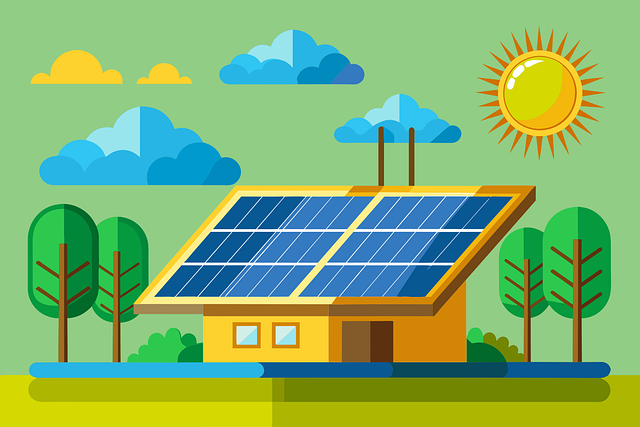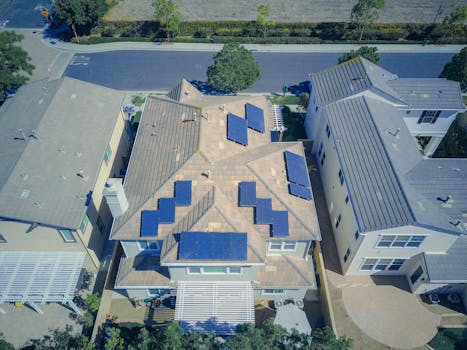“Unlock the Power of the Sun: Maximize Solar Efficiency with Advanced Solar Trackers.”
Maximizing solar efficiency is crucial for optimizing energy production in solar systems, and one of the most effective methods to achieve this is through the use of solar trackers. Solar trackers are devices that adjust the orientation of solar panels throughout the day to follow the sun’s path across the sky. By maintaining an optimal angle relative to the sun, solar trackers can significantly increase the amount of sunlight captured, leading to higher energy output compared to fixed solar installations. This technology not only enhances the overall efficiency of solar systems but also contributes to a more sustainable energy future by maximizing the utilization of renewable resources. As the demand for clean energy continues to grow, integrating solar trackers into solar systems presents a compelling solution for both residential and commercial applications.
Benefits Of Solar Trackers For Increased Energy Output
Solar energy has emerged as a pivotal solution in the quest for sustainable and renewable energy sources. As the technology surrounding solar systems continues to evolve, one of the most significant advancements is the integration of solar trackers. These devices are designed to enhance the efficiency of solar panels by adjusting their position to follow the sun’s trajectory throughout the day. The benefits of solar trackers for increased energy output are substantial, making them an essential consideration for anyone looking to optimize their solar energy systems.
To begin with, solar trackers can significantly increase the amount of sunlight that solar panels capture. Traditional fixed solar panels are stationary and can only absorb sunlight from a limited angle. In contrast, solar trackers can pivot and tilt, allowing them to maintain an optimal angle relative to the sun as it moves across the sky. This dynamic positioning can lead to energy output increases of 20% to 50%, depending on the geographical location and the specific type of tracker used. Consequently, this enhanced energy capture translates directly into higher electricity generation, making solar trackers a wise investment for both residential and commercial solar installations.
Moreover, the increased energy output from solar trackers can lead to improved return on investment (ROI) for solar system owners. By generating more electricity, users can either reduce their reliance on grid power or sell excess energy back to the grid, depending on local regulations and incentives. This additional revenue stream can significantly shorten the payback period for solar installations, making solar trackers not just a technical enhancement but also a financially sound decision. As energy prices continue to fluctuate, the ability to maximize energy production becomes increasingly valuable.
In addition to financial benefits, solar trackers also contribute to the overall sustainability of solar energy systems. By maximizing energy output, these devices help to reduce the carbon footprint associated with energy production. The more efficient a solar system is, the less reliance there is on fossil fuels, which are often used to supplement energy needs. This alignment with environmental goals is particularly appealing to businesses and individuals who prioritize sustainability in their operations and lifestyle choices.
Furthermore, the technological advancements in solar tracker design have made them more reliable and easier to maintain. Modern solar trackers are equipped with sophisticated sensors and control systems that ensure optimal performance with minimal human intervention. This automation not only enhances efficiency but also reduces the operational costs associated with manual adjustments and maintenance. As a result, users can enjoy the benefits of increased energy output without the burden of constant oversight.
It is also worth noting that solar trackers can be particularly advantageous in areas with high solar insolation, where sunlight is abundant. In such regions, the potential for energy generation is maximized when solar panels can continuously align with the sun. This adaptability is crucial in optimizing energy production, especially during peak sunlight hours when demand is highest.
In conclusion, the integration of solar trackers into solar energy systems offers numerous benefits that significantly enhance energy output. By allowing solar panels to follow the sun’s path, these devices increase electricity generation, improve ROI, and contribute to sustainability efforts. As technology continues to advance, the role of solar trackers in maximizing solar efficiency will undoubtedly become more prominent, making them an essential component of modern solar energy solutions.
Types Of Solar Trackers: Which One Is Right For You?

When considering the integration of solar trackers into solar systems, it is essential to understand the various types available and how each can impact the efficiency of solar energy production. Solar trackers are devices that orient solar panels toward the sun as it moves across the sky, thereby maximizing the amount of sunlight captured throughout the day. The two primary types of solar trackers are single-axis and dual-axis trackers, each offering distinct advantages depending on specific needs and geographical conditions.
Single-axis trackers are designed to rotate on one axis, typically oriented north to south. This allows the solar panels to tilt and follow the sun’s path from east to west during the day. The simplicity of single-axis trackers makes them a popular choice for many solar installations, particularly in regions with high solar insolation. By increasing energy capture by approximately 25% to 35% compared to fixed solar panels, single-axis trackers provide a cost-effective solution for maximizing solar efficiency. Moreover, their relatively lower installation and maintenance costs make them an attractive option for both residential and commercial applications.
On the other hand, dual-axis trackers offer a more advanced solution by allowing solar panels to move on two axes. This capability enables the panels to adjust not only to the sun’s east-west movement but also to its elevation changes throughout the year. As a result, dual-axis trackers can increase energy production by up to 40% or more compared to fixed systems. This significant boost in efficiency is particularly beneficial in areas with varying sun angles or during seasons when the sun’s path changes dramatically. However, it is important to note that dual-axis trackers typically come with higher installation and maintenance costs, which may not be justified for all users.
When deciding which type of solar tracker is right for you, several factors should be considered. First, evaluate your geographical location and the solar insolation levels in your area. Regions with consistent sunlight and minimal cloud cover may benefit more from single-axis trackers, while areas with significant seasonal variations in sunlight may warrant the investment in dual-axis systems. Additionally, consider the available space for installation. Dual-axis trackers generally require more land than single-axis systems, so if space is limited, a single-axis tracker may be the more practical choice.
Another critical aspect to consider is the financial investment and return on investment (ROI). While dual-axis trackers can provide higher energy yields, the initial costs and ongoing maintenance may impact the overall financial viability of the system. It is essential to conduct a thorough cost-benefit analysis, taking into account local energy prices, potential incentives, and the expected lifespan of the solar equipment. This analysis will help determine which type of tracker aligns best with your financial goals and energy needs.
In conclusion, the choice between single-axis and dual-axis solar trackers ultimately depends on a combination of factors, including geographical location, available space, and financial considerations. By carefully evaluating these elements, you can make an informed decision that maximizes solar efficiency and enhances the overall performance of your solar system. As the demand for renewable energy continues to grow, understanding the nuances of solar tracking technology will empower you to harness the sun’s energy more effectively, paving the way for a sustainable future.
Installation Tips For Optimal Solar Tracker Performance
When it comes to maximizing solar efficiency, the installation of solar trackers can significantly enhance the performance of solar systems. Solar trackers are devices that orient solar panels toward the sun as it moves across the sky, thereby increasing energy capture throughout the day. To ensure optimal performance of these systems, several installation tips should be considered.
First and foremost, selecting the right location for the solar tracker is crucial. The site should be free from obstructions such as trees, buildings, or other structures that could cast shadows on the solar panels. Even partial shading can drastically reduce the energy output, so a thorough assessment of the area is essential. Ideally, the installation site should have unobstructed access to sunlight for the majority of the day, particularly during peak sunlight hours. Conducting a solar site analysis can help identify the best location, taking into account seasonal variations in sunlight.
Once the location is determined, the next step involves ensuring a stable foundation for the solar tracker. The foundation must be robust enough to withstand environmental factors such as wind, rain, and snow. Depending on the type of tracker, whether single-axis or dual-axis, the installation may require different foundation designs. For instance, dual-axis trackers, which can tilt both horizontally and vertically, may necessitate deeper foundations to maintain stability. It is advisable to consult with a structural engineer to ensure that the foundation meets local building codes and can support the weight and movement of the tracker.
In addition to a solid foundation, proper alignment of the solar tracker is vital for maximizing efficiency. The tracker should be oriented correctly to follow the sun’s path throughout the day. This involves calibrating the tracker’s control system to ensure it accurately adjusts the panels’ angle based on the sun’s position. Many modern trackers come equipped with GPS technology and advanced algorithms that facilitate precise alignment, but it is still important to verify that the initial setup is correct. Regular maintenance checks can help ensure that the tracker continues to function optimally over time.
Moreover, it is essential to consider the electrical connections during installation. Proper wiring and connections are critical for the efficient operation of the solar tracker and the solar panels. Ensuring that all connections are secure and weatherproof will help prevent energy loss and potential damage from environmental factors. Additionally, integrating monitoring systems can provide real-time data on energy production and tracker performance, allowing for timely adjustments and maintenance.
Furthermore, it is important to educate users about the operation and maintenance of solar trackers. Understanding how to operate the system effectively can lead to better energy management and increased efficiency. Regular maintenance, including cleaning the solar panels and checking the mechanical components of the tracker, will help sustain optimal performance. Users should also be aware of any software updates or improvements that may enhance the functionality of their solar tracking system.
In conclusion, maximizing solar efficiency with solar trackers requires careful consideration during the installation process. From selecting the right location and ensuring a stable foundation to proper alignment and electrical connections, each step plays a critical role in the overall performance of the solar system. By following these installation tips and committing to regular maintenance, users can significantly enhance the energy output of their solar trackers, ultimately contributing to a more sustainable energy future.
Cost-Benefit Analysis: Are Solar Trackers Worth The Investment?
As the demand for renewable energy sources continues to rise, solar power has emerged as a leading contender in the quest for sustainable energy solutions. Among the various technologies available to enhance solar energy production, solar trackers have gained significant attention. These devices adjust the orientation of solar panels throughout the day to follow the sun’s path, thereby maximizing energy capture. However, the question remains: are solar trackers worth the investment? A thorough cost-benefit analysis can provide valuable insights into this decision.
To begin with, it is essential to understand the initial investment required for solar trackers. Typically, the cost of installing solar trackers can be significantly higher than that of fixed solar panel systems. This is primarily due to the additional components and technology involved, including motors, sensors, and control systems. Consequently, potential buyers must weigh these upfront costs against the long-term benefits that solar trackers can provide.
One of the most compelling advantages of solar trackers is their ability to increase energy production. Studies have shown that single-axis solar trackers can enhance energy output by approximately 25% to 35% compared to fixed systems, while dual-axis trackers can yield even higher gains. This increased efficiency translates into more electricity generated over the lifespan of the solar installation, which can lead to substantial savings on energy bills. Furthermore, the additional energy produced can also be sold back to the grid in regions where net metering policies are in place, providing an additional revenue stream.
In addition to the increased energy output, solar trackers can also improve the overall return on investment (ROI) for solar systems. By generating more electricity, the payback period for the initial investment can be shortened, making solar trackers a more attractive option for both residential and commercial installations. However, it is crucial to consider the specific location and climate conditions, as the effectiveness of solar trackers can vary based on geographic factors. For instance, areas with high solar insolation and minimal shading are more likely to benefit from the use of trackers.
Moreover, maintenance costs should also be factored into the cost-benefit analysis. While fixed solar systems generally require less maintenance, solar trackers involve moving parts that may necessitate more frequent servicing. This can lead to increased operational costs over time. However, many manufacturers offer warranties and service agreements that can mitigate these concerns, making it essential for potential buyers to research and choose reliable products.
Another important consideration is the environmental impact of solar trackers. By maximizing energy production, these devices contribute to a more efficient use of land and resources, which is particularly beneficial in areas where space is limited. Additionally, the increased adoption of solar technology can help reduce reliance on fossil fuels, further supporting global sustainability efforts.
In conclusion, the decision to invest in solar trackers should be based on a comprehensive cost-benefit analysis that considers initial costs, potential energy production increases, maintenance requirements, and environmental impacts. While the upfront investment may be higher, the long-term benefits of enhanced energy output and reduced energy costs can make solar trackers a worthwhile addition to solar systems. Ultimately, as technology continues to evolve and the demand for renewable energy grows, solar trackers may play a pivotal role in maximizing solar efficiency and driving the transition to a more sustainable future.
Q&A
1. **Question:** What is a solar tracker?
**Answer:** A solar tracker is a device that orients solar panels toward the sun as it moves across the sky, maximizing sunlight exposure and energy production.
2. **Question:** How do solar trackers improve energy efficiency?
**Answer:** Solar trackers can increase energy capture by 20-50% compared to fixed solar panels by maintaining optimal alignment with the sun throughout the day.
3. **Question:** What are the two main types of solar trackers?
**Answer:** The two main types of solar trackers are single-axis trackers, which rotate on one axis, and dual-axis trackers, which can move on both horizontal and vertical axes.
4. **Question:** What factors should be considered when installing solar trackers?
**Answer:** Factors to consider include site location, land availability, installation costs, maintenance requirements, and local weather conditions that may affect performance.
Conclusion
Maximizing solar efficiency with solar trackers significantly enhances energy production by allowing solar panels to follow the sun’s trajectory throughout the day. This dynamic alignment increases the amount of sunlight captured, leading to higher overall energy output compared to fixed systems. By optimizing the angle of incidence, solar trackers can improve efficiency by 20-50%, making them a valuable investment for both residential and commercial solar systems. Ultimately, the integration of solar trackers not only boosts energy generation but also contributes to a more sustainable and cost-effective solar energy solution.




